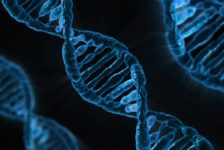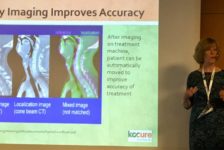KCCure’s Kidney Cancer Research Priorities were developed in response to a survey conducted for the newly formed Kidney Cancer Research Program (KCRP). Advice and suggestions were gathered from our National Patient Advisory Board and our Scientific Advisory Board.
Kidney Cancer Research Priorities
- When considering the state of the science in kidney cancer research, identify up to 3 knowledge gaps that, if filled, would have significant impact on patient care.[1]
- Earlier detection/prevention of kidney cancer. [2]
- Understanding genetic drivers in RCC to identify those in need of early screening;
- Better tools/less invasive measures that can be used for screening;
- Better prognostication of risk and ability to prevent metastatic disease.[3]
- Better understanding of underlying pathology of the disease;
- More information about rare histological subtypes;
- Identifying additional biomarkers for risk;
- Adjuvant therapy to prevent metastatic disease;
- Effective treatment of metastatic disease.
- Identifying why some patients respond and others don’t to various therapies;
- Overcoming resistance to therapies;
- Identification of new pathways, development of novel therapies.
- Better understanding of sequencing and use of treatments in combination.
- Enter up to 5 strategic goals for research in kidney cancer over the next 5 years.
- Determining who may be at high risk for developing the disease; identifying appropriate screening measures; Characterization of the factors responsible for metastatic spread and metastatic growth characteristics (stem-cell, tumor-micro-environment, immune interactions)
- Greater understanding of underlying tumor biology, including different histological subtypes, genetic causes, and clinical presentations.
- Understanding drug response and resistance in targeted therapies;
- Identifying characteristics in immunotherapy – responders vs. non-responders;
- Identification of novel pathways and agents, identify how already discovered pathways can be combined to more effectively combat the disease.
- Enter up to 5 strategic goals for patient care in kidney cancer over the next 5 years.
- Optimizing characterization of renal masses – knowing more about the disease earlier.
- Defining the best surveillance protocol for the individual patient;
- Develop standardized pathology reports that provide patients with an accurate picture of their risk level, develop adjuvant therapies to prevent recurrence;
- Define the best drug for systemic therapy based on tumor characteristics and clinical features;
- Unlocking the keys to immunotherapy; why do some patients have complete responses and others have hyper-progression? How can we make immunotherapy work for more patients, how can we achieve more complete and durable responses?
- What significant issues in kidney cancer research impede the goal of cure?
- Lack of public and private funding; small patient population that is often ignored by major pharmaceutical companies; difficulty finding seed funding for basic, high risk research.
- Doctor and research shortage, without funding, many doctors aren’t specializing in kidney cancer when they could instead turn to a more well-funded cancer such as prostate.
- Siloed communities, lack of communication between surgeons, medical oncologists, radiologists, pathologists and the patient community; Increased sharing of information could provide more significant breakthroughs, better understanding of the patient perspective can more efficiently identify gaps and open opportunities for increased success.[4]
- Lack of access to tissue for research, duplication of research, systemic flaws that inhibit sharing of information among stakeholders.[5]
- Lack of long-term institutional knowledge to build on previous research – disconnect between the immunotherapy work from 20 and 30 years ago to the on-going research that is occurring today.[6]
- What research gaps exist in Quality of Life issues after kidney cancer treatment?
- Lack of effectively trained urologists in the community setting, failure to set clear standards and guidelines for surgical approaches (partial versus radical nephrectomy, lymphonodectomy, adrenal removal, etc…).
- Lack of standardized guidelines and knowledge related to risk stratification and surveillance measures for those at risk for metastatic disease.[7]
- No adjuvant therapy to prevent or delay recurrence.[8]
- Creation of a standardized pathology classification of tumors into risk categories based on their genetic differentiation would lead to better outcomes for patients at all levels of the care continuum including more effective diagnosis and surgical management, better surveillance, and better therapy.
- More research in the area of surgical management – both for primary tumors (flank incisions? Open vs. laporoscopic? Risks with hand-assisted laproscopic approaches? When and when not to biopsy) – and metastectomy for advanced stage patients.
- Better education and training for general oncologists who treat few patients and aren’t aware of the latest developments and advances;
- Predictors and biomarkers for treatments, determining which therapy works best for which patient, moving away from the current standard of care where patients try everything to see if it works with no predictors related to efficacy.
- Predictors of side effects of certain drugs and correlation to effect of a selected drug to ease the choice of the best drug for an individual patient.
[1] A crucial component for all three of these goals is to better incorporate patients and real life experience into how we advance rsearch in kidney cancer.
[2] RCC is a disease that can be cured with surgical intervention – but we first need to know who is at risk and how to screen for the disease.
[3] Kidney cancer consists of a number of different types of malignant tumors that originate in the kidney, each having different histology, genetic cause and clinical presentations. Progress at every level from diagnosis to disease management is dependent on a deeper understanding of the underlying tumor biology.
[4] As an example, a recent KCCure patient survey (400 patients) found that many patients are receiving inappropriate diagnostic imaging – knowing that information can help the community identify not only gaps in care but gaps in research (if we aren’t effectively imaging, do we really have an accurate picture of the disease? Is our underlying data accurate?).
[5] Tissue collection is occurring at various sites but information gathered isn’t being shared. In small patient populations, we should identify ways to aggregate patients and patient data into a more centralized system, opening up collaborative research opportunities.
[6] Thirty years ago, Time Magazine proclaimed Interleukin as The End of Cancer – today we have new checkpoint inhibitors that are being heralded in the same manner – as if IL-2 was never discovered. We have to stop moving from one shiny object to the next without effectively clarifying what worked and what didn’t work in the past.
[7] Even patients with T1a tumors experience recurrent metastatic disease – sometimes ten years or more post nephrectomy. Better education and awareness for these patients is crucial.
[8] This results in significant fear and anxiety for post-surgical patients.







